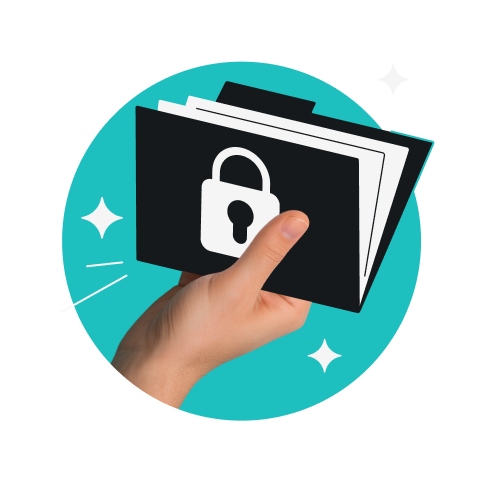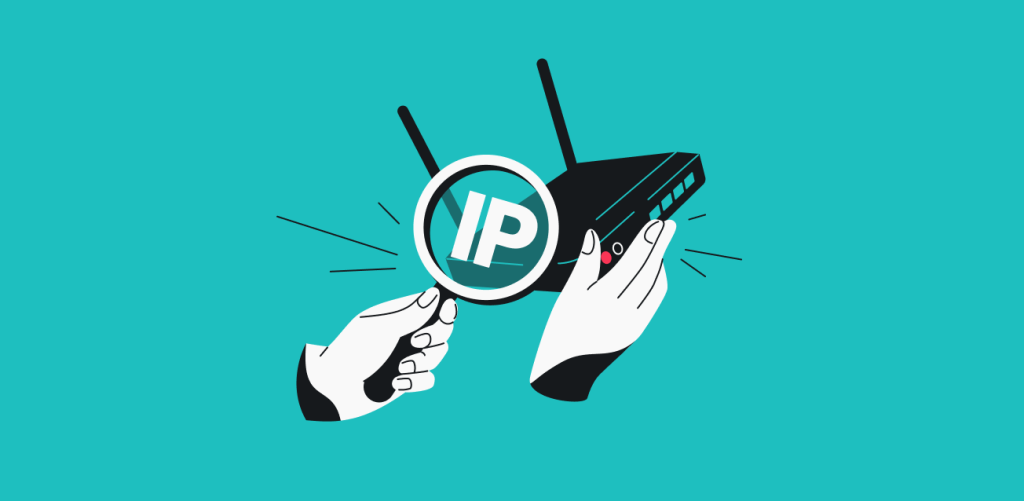
Slow internet speeds, unknown devices, and high data usage are signs that someone might be stealing your Wi-Fi. Spotting these red flags early on is key, as unauthorized users on your private network could spell trouble.
Wi-Fi stealers might track your online activities and snoop on your private data. They could also spread malware, compromising your connected devices. Worse, your Wi-Fi could be used for illegal or unethical activities.
So, how can you tell if someone is using your Wi-Fi, and what should you do to prevent unauthorized access? Read along to find out.
Table of contents
How can someone steal your Wi-Fi?
Whether it’s malicious actors trying to tap into your Wi-Fi or freeloaders looking to mooch off your internet, there are several ways people might use to sneak into your network:
- Try default passwords: most routers come with a default username and password, making it easy for anyone to guess the credentials simply by going through a list of common defaults;
- Exploit weak security protocols: outdated encryption like WEP (Wired Equivalent Privacy), old firmware, and misconfigured routers create security gaps that can be exploited to get into your network;
- Use special tools: cybercriminals might use tools like network sniffers to gather information from traffic, packet analyzers to identify vulnerabilities, and software that intercepts and alters communication to breach your network;
- Perform brute-force attacks: by methodically trying every possible combination with automated tools, bad actors can easily crack your password if it’s short, simple, or predictable;
- Leverage unsecured devices: devices with poor security on your network can be exploited to gain entry to the entire network;
- Phish for information: attackers might trick you into sharing your Wi-Fi password through fake technical support emails, bogus surveys, or spoofed text messages;
- Employ social engineering tactics: whether posing as a network technician or a neighbor in distress, a malicious actor can manipulate you into giving up your network credentials.
How to check if someone is stealing your Wi-Fi?
If you notice red flags such as unfamiliar devices, a sluggish connection, or unusual activity, you may have a Wi-Fi stealer on your hands. Let’s go through how to check if someone is stealing your Wi-Fi.
Check your router’s network map
A network map visually outlines your Wi-Fi network’s components and how they interact. Since it displays all connected devices and their IP (Internet Protocol) addresses, you can review the map for any unfamiliar or suspicious devices that might suggest someone is accessing your Wi-Fi network without authorization.
However, some seemingly unfamiliar devices might simply be ones you’ve overlooked or don’t immediately recognize, such as solar panels, smart speakers, printers, and thermostats. Fortunately, many network maps offer the option to filter by device type, making it easier to sift through the list if you have numerous connected devices.
Use a router or Wi-Fi security app
There are third-party apps that scan your network and list all connected devices. Typically, these apps will display details such as the IP and MAC (Media Access Control) addresses of all connected devices. Some apps even identify the types of devices. If you spot any unfamiliar entries, it could mean someone is accessing your network without permission.
Many of these apps also come with additional features, such as real-time alerts for new connections and the ability to block unknown devices right from the app. This way, you can quickly kick unauthorized devices off your network when you’re notified.
Review router logs
Router logs document all network activities, providing a detailed breakdown that includes IP addresses, connection times, and data usage. As the logs track all activities, you can catch unauthorized users even if they aren’t currently connected. Just check for unfamiliar entries or IP addresses that don’t match your devices. High data usage can also signal intrusions.
However, interpreting router logs can be a technical and laborious task. The logs usually contain a long list of mostly numbers, making it extremely difficult to pinpoint suspicious entries that don’t belong.
Monitor the lights on your router
A quick way to figure out if someone is stealing your Wi-Fi is to check your router’s lights. Most routers have light indicators for various statuses, including power, internet connection, and wireless activity. If the activity light blinks more than usual or remains constantly lit, it could suggest someone is on your network without you knowing.
To use this method effectively, switch off all your wireless devices and observe whether the activity light remains active. However, while straightforward, this method might not work well if you have many devices on your network, which is common for a modern household. Additionally, a skilled attacker could use techniques that don’t affect network activity.
What can you do to protect yourself from Wi-Fi thieves?
To protect yourself from Wi-Fi stealers, it’s essential to minimize all security gaps that can be exploited. Let’s run through a few preventive measures that you can take to secure your Wi-Fi network and reduce the risk of unauthorized access.
Change your network name (SSID)
The SSID (Service Set Identifier) is the name of your Wi-Fi network that appears when you scan for available networks on your devices. Most routers come with a preset SSID, which typically includes your router’s brand or network provider’s name, along with the router’s serial number or model.
This default SSID can reveal details about your hardware, making it easier for Wi-Fi thieves to exploit known vulnerabilities. Additionally, sticking with the default SSID might suggest that you haven’t changed other default settings, such as the router’s admin username and password. To minimize the risk of Wi-Fi theft, choose an SSID that doesn’t disclose specific information about your router.
Use a WPA2 (Wi-Fi Protected Access 2) password
While WPA3 is the latest and most secure protocol, many Wi-Fi devices still don’t support it. For now, using a WPA2 password remains the recommended method for securing your network. Although WPA2 doesn’t have specific requirements, you should still ensure your password is a strong defense against Wi-Fi theft.
To fend off Wi-Fi stealers, use a combination of uppercase and lowercase letters, numbers, and special characters. Additionally, aim for a password of at least 12-16 characters long. Steer clear of overused options like “wifi0000,” “qwerty,” and “password,” as these can be quickly compromised if brute-forced.
Rename your router
Your router’s name, which is different from your network name (SSID), is used to access the router’s admin panel, where you manage security settings. By default, this name often includes details about the router’s manufacturer or model, making it easier for cybercriminals to look up documented security flaws and target those weak spots or tailor their attacks.
To reduce the risk of unauthorized access to your network, change your router name to something non-descriptive that doesn’t give away any information about the router. Otherwise, cybercriminals could access your admin panel and modify network settings, change passwords, or create backdoors to further exploit your network.
Use a VPN (Virtual Private Network)
While a VPN doesn’t directly prevent your Wi-Fi from being stolen, it offers crucial protection if your network has already been compromised. A reliable VPN like Surfshark encrypts all the data transmitted over your home Wi-Fi network, making it unreadable even if your data falls into a Wi-Fi thief’s hands. All they’ll see is scrambled, indecipherable data.
Additionally, a VPN ensures that even if someone gains access to your network, they won’t be able to track your online activities, such as websites visited, files downloaded, or links clicked. To protect all devices connected to your network, set up the VPN on your router. You can also install the VPN app on your devices to stay safe on public Wi-Fi if you’re often out and about.
Stay vigilant to guard against Wi-Fi stealers
Knowing how to tell if someone is using your Wi-Fi without permission is essential. This will allow you to quickly address potential issues such as malware infections, compromised devices, and network abuse.
Still, the best defense against Wi-Fi theft is to take proactive measures such as updating your SSID, choosing a strong password, and renaming your router. Additionally, using a VPN can help close remaining security gaps, keeping your data safe even if someone sneaks into your network.
FAQ
Can someone steal my data through Wi-Fi?
Yes, someone can steal your data through Wi-Fi if they get into your network. They might spy on your online activity, steal personal information, intercept communications, or access connected devices to extract data. That’s why securing your Wi-Fi network and using a VPN to encrypt your data is vital.
Can someone spy on you through Wi-Fi?
Yes, someone can spy on you through Wi-Fi if they sneak onto your network. These intruders might monitor your traffic, track your online behavior, or steal sensitive data like login credentials and emails. To prevent this, take proactive measures such as changing your SSID and using a strong password. Additionally, use a VPN to encrypt your data for added security.
How can I see all devices connected to my Wi-Fi?
To see all the devices connected to your Wi-Fi, you can head to your router’s admin interface and check the network map or the list of connected devices. There are also apps and scanning tools that allow you to see all the active devices on your network.


